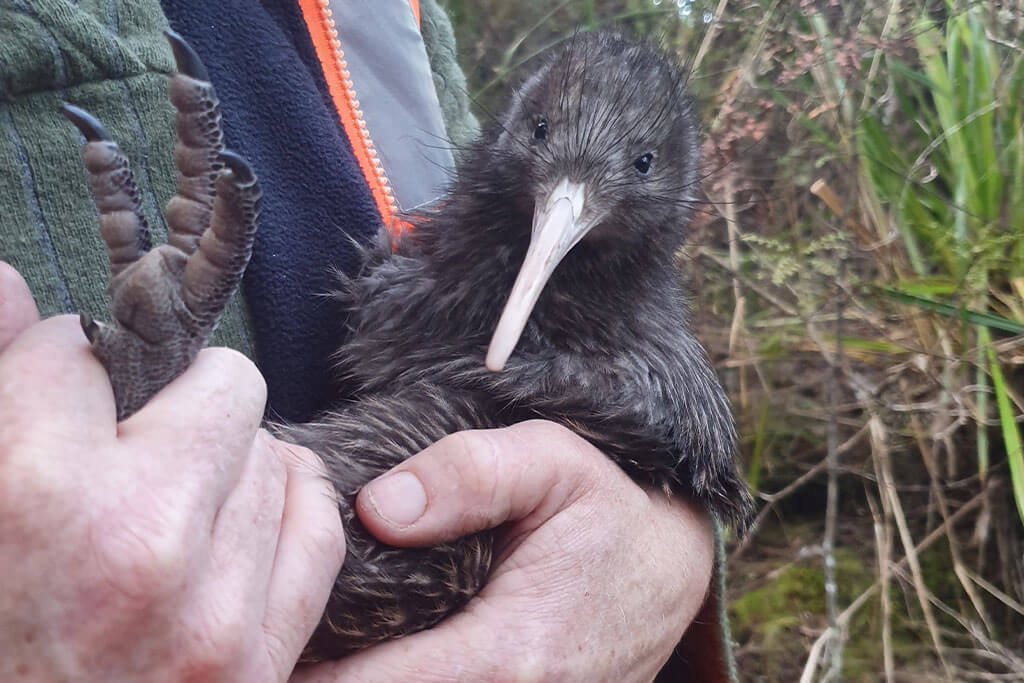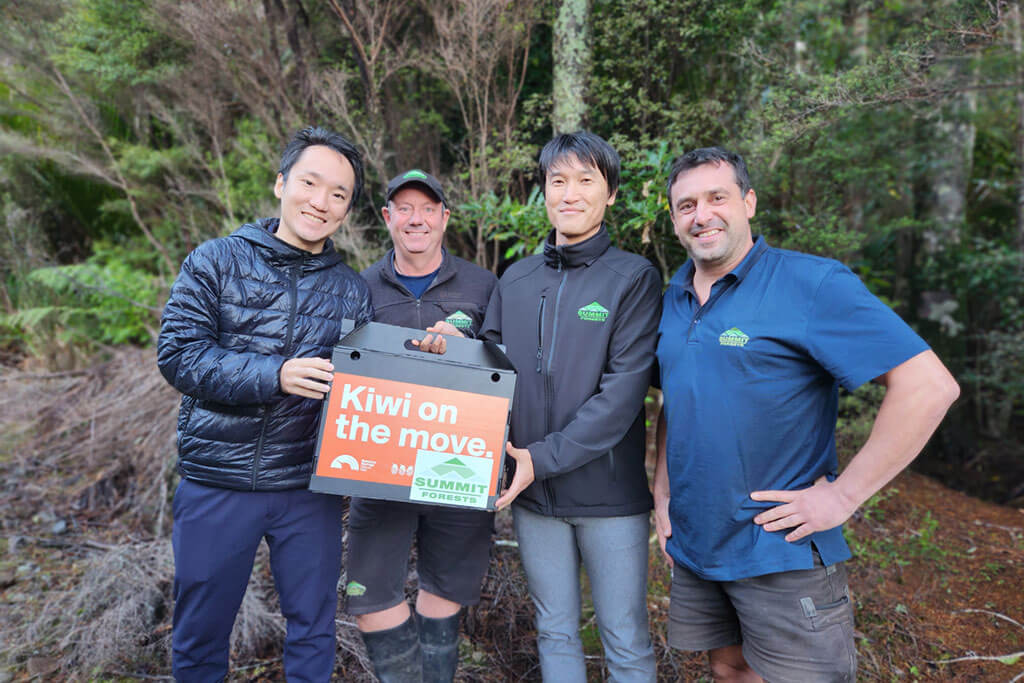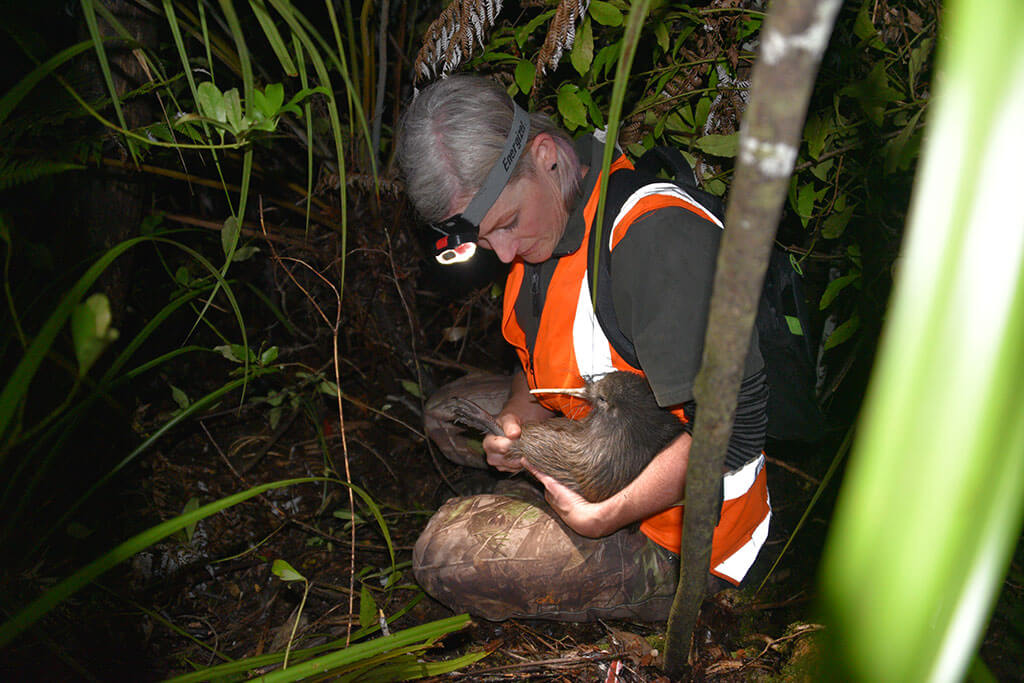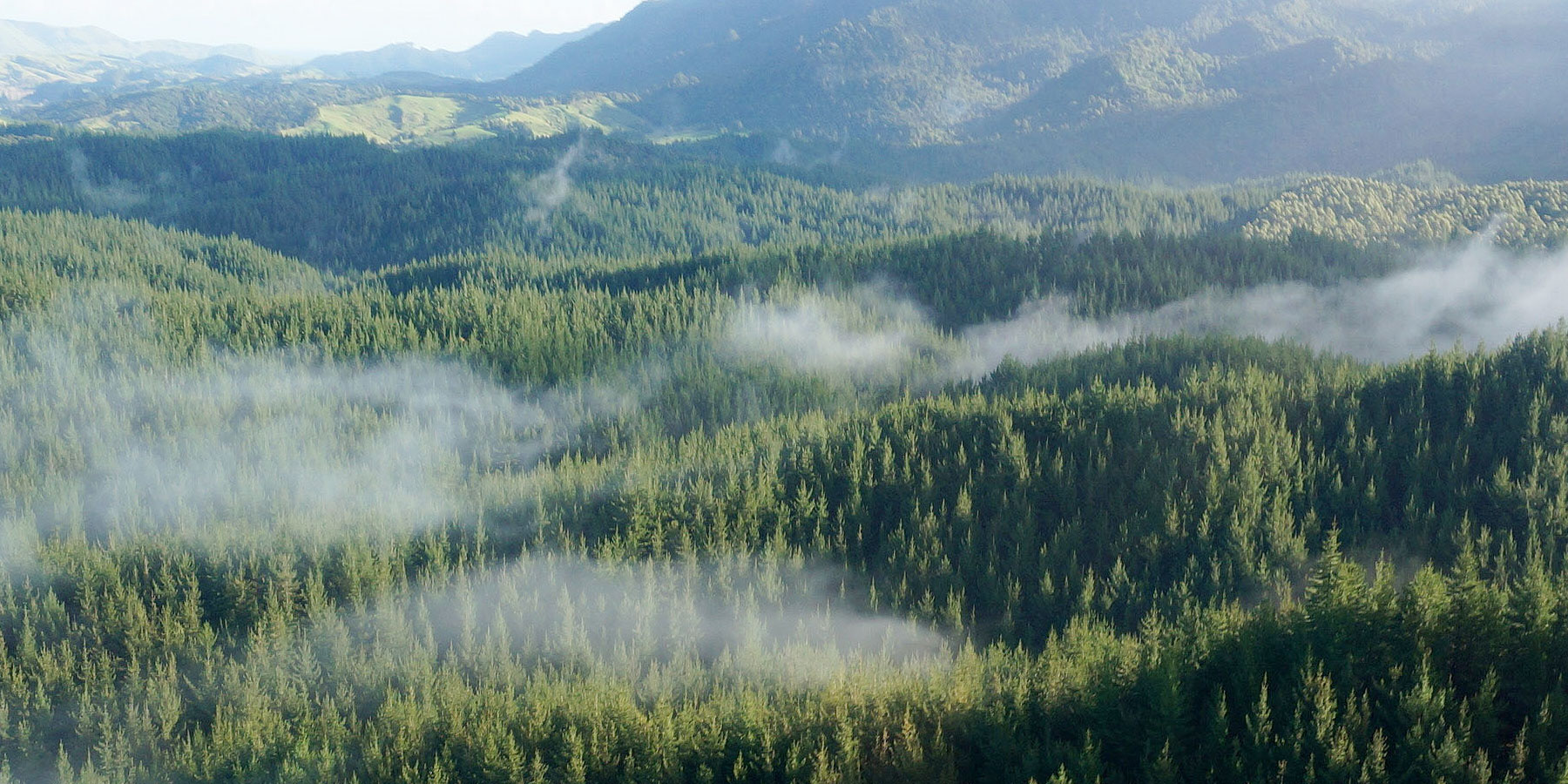In Whangapoua Forest in the Coromandel — a Summit-owned production forest — magic is happening. With the help of the Project Kiwi Trust and a custom predator control programme, we are slowly increasing the population of Coromandel brown kiwi.
Project Kiwi is the oldest community-led kiwi conservation project in the world. It started when the Kuaotunu community decided to protect kiwi in the area from the threat of predators (stoat, weasel, and feral cats).
Engaged by Summit, Project Kiwi manages a predator control programme (trap network) within Whangapoua Forest in an area we call the Biodiversity Block. The Biodiversity Block covers 1432 hectares and was selected because it’s a suitable habitat for Coromandel brown kiwi, offering two catchments with two sizeable streams, and a mix of exotic (70%) and native (30%) trees.



There are now 193 traps in the Biodiversity Block; these are checked and serviced 24 times a year.
The effectiveness of the trapping efforts on growing the population of kiwi is measured by a kiwi call count survey every two years. The survey involves listening for kiwi calls between 6pm-8pm over three consecutive nights in June, at the same sites every time. In 2012, the baseline overall call rate was 1.61 calls per listening hour; in 2021 that had increased to 2.00 — an indication the management programme is having a positive effect on the population of Coromandel brown kiwi here.
In June 2023, Project Kiwi and Summit Forests released the 100th kiwi into the Whangapoua Forest. Due to the superb efforts of the Project Kiwi Trust, supported by Summit, the accelerated growth of the kiwi population in the Whangapoua Forest is contributing to the regional recovery of the Coromandel brown kiwi both in numbers and providing safe habitat, but also in connecting neighbouring spaces where predator control is in place, creating corridors where kiwi can move across larger tracts of land safely.
